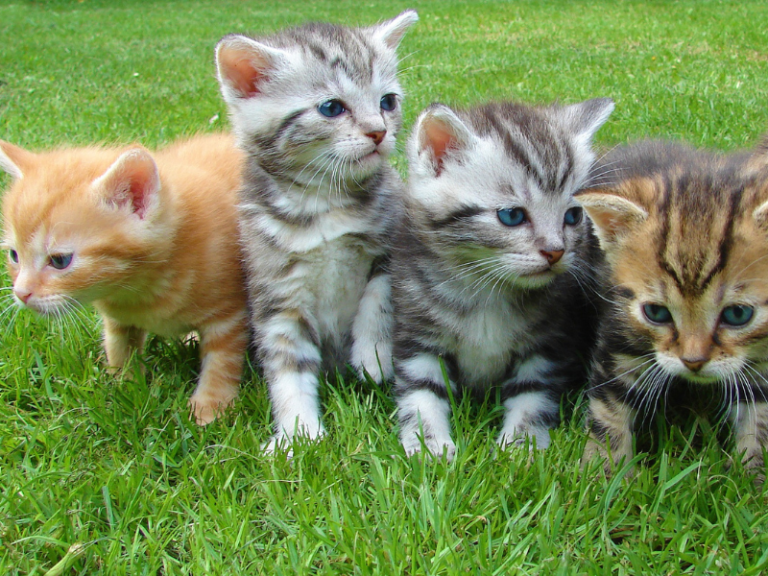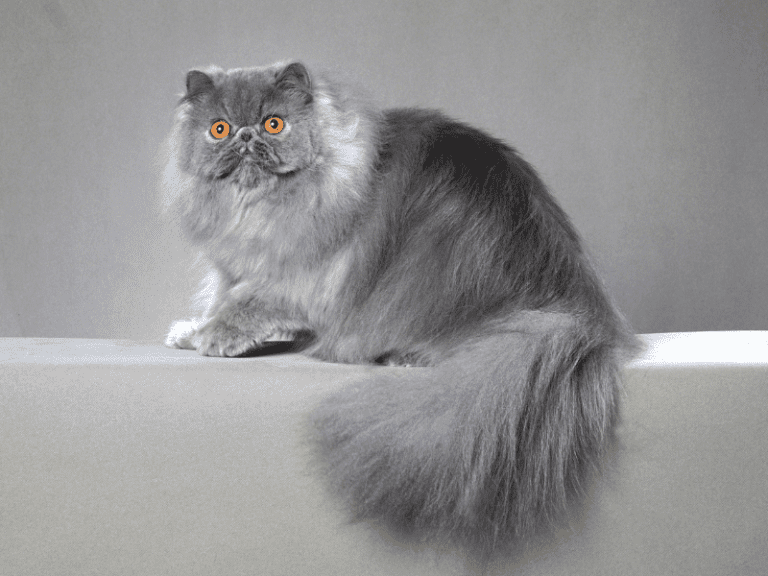The Cat’s Meow: A Guide to Resolving Litter Box Issues in Feline Friends
FULL DISCLOSURE: The links I share in this course ARE my affiliate links. This means I earn a commission, at no extra cost to you. In fact, sometimes you’ll get a discount or free credits just FOR using my link. 🙂
Let's face it – nobody likes coming home to find that their beloved feline friend has turned their living room into a litter box.
Inappropriate urination and defecation can be frustrating, but worry not!
We've got you covered with a helpful guide to tackle this messy issue. Read on to learn why your cat might be leaving unwanted surprises and how you can help them get back on track.
The Scoop on Poop – Why is My Cat Doing This?

Before you think your cat is staging a coup against your home, consider that there might be an underlying medical issue at paw. A trip to the vet can help identify conditions such as urinary tract infections, bladder stones, constipation or diarrhea, and kidney issues.
Urinary tract infections can cause your cat to strain to urinate or have blood in their urine. Bladder stones can cause pain and discomfort, making it difficult for your cat to use the litter box. Constipation or diarrhea can both be signs of underlying health issues, and kidney issues can lead to changes in your cat's bathroom habits.
Behavioral Blunders: Non-Medical Reasons for Naughty Bathroom Habits
If your vet gives your cat a clean bill of health, it's time to explore some behavioral reasons for their sudden bathroom rebellion. Here are a few possibilities:
- Stress and anxiety
- Marking territory
- Dirty litter box
- Changes in the environment
Change in their Environment
One common cause of stress in cats is a change in their environment. Moving to a new home, rearranging furniture, or adding a new pet to the household can all cause stress for your furry friend.
It's important to give your cat time to adjust to these changes and provide plenty of opportunities for them to feel safe and secure.
Marking Territory
Another possibility is marking territory. If you have multiple cats, or if there are outdoor cats in your area, your cat may be marking their territory by urinating outside of their litter box.
This can be addressed by providing multiple litter boxes in different areas of the house, as well as cleaning up any areas where your cat has urinated outside of the box with an enzymatic cleaner to remove the scent.
Dirty Litter Box
A dirty litter box can also lead to bathroom rebellion. Cats are naturally clean animals and may refuse to use a litter box that is too full or hasn't been cleaned frequently enough.
Make sure to scoop the litter box at least once a day and completely change the litter and wash the box once a week.
Stress and Anxiety
Lastly, stress and anxiety can cause your cat to rebel in other ways, such as scratching furniture or acting out. It's important to create a calm and comforting environment for your cat, with plenty of opportunities for play and relaxation.
If you're struggling to identify the cause of your cat's bathroom rebellion, don't hesitate to seek the advice of a veterinarian or animal behaviorist.
Litter-ally Speaking: Litter Box Basics
A cat's litter box is its personal palace, so make sure it's fit for royalty. Take note of these factors when choosing a litter box:
Size Matters! Bigger is Better
First and foremost, size matters. A litter box that is too small can be uncomfortable for your cat and may lead to them refusing to use it. Generally, a larger litter box is better, especially if you have a larger cat.
Choose Between Open or Hooded Options
Next, consider whether you want an open or hooded litter box. Open litter boxes are easy to clean and allow your cat to have a clear view of their surroundings while they use the bathroom.
Hooded litter boxes offer more privacy and can help contain any odors, but they require more frequent cleaning to avoid smells building up inside.
Choose Material and Durability
The material and durability of the litter box are also important factors to consider. Plastic litter boxes are a popular option due to their affordability and easy cleaning, but they may not be as durable as other materials like metal or ceramic.
Location, Location, Location: Picking the Purr-fect Spot

Now that you've chosen a suitable litter box, it's time to find the ideal location. Keep these tips in mind:
Avoid high-traffic areas
First and foremost, it's important to avoid high-traffic areas where your cat may be disturbed while using the bathroom. Placing the litter box in a quiet, low-traffic area of your home can help your cat feel more at ease and encourage them to use it regularly.
Give your cat some privacy
Privacy is also important for many cats, so it's a good idea to choose a location that offers some degree of seclusion. Placing the litter box behind a piece of furniture or in a corner can help your cat feel more comfortable and reduce the likelihood of accidents or refusal to use the box.
Keep it away from food and water
Keep the litter box away from your cat's food and water. Cats are naturally clean animals and may avoid using a litter box that is located too close to their food and water bowls.
Additionally, keeping the litter box separate from food and water can help prevent any contamination or unpleasant odors.
Tackling Tabby Troubles: Steps to Solve Inappropriate Elimination
Make a Clean Sweep: Maintaining a Pristine Potty

The key to keeping your cat's litter box use on track is keeping it clean. Follow these guidelines: scoop daily, deep clean weekly, and replace litter as needed. A stressed cat may resort to inappropriate elimination.
Stress-Busting Strategies: Creating a Zen Zone for Your Cat
If your cat is feeling stressed or anxious, it can manifest in a variety of ways, including inappropriate elimination outside of the litter box. To help your cat feel more relaxed and at ease, there are a few stress-busting strategies you can try.
Provide Hidey-Holes and Perches
Providing hidey-holes and perches can give your cat a sense of security and help them feel more in control of their environment. Cats naturally love to hide and observe from high vantage points, so providing opportunities for them to do so can help reduce stress and anxiety.
Play With Your Cat Daily
Daily playtime is also important for cats, as it provides them with a much-needed outlet for their energy and helps them feel more relaxed and happy. Schedule a regular playtime with your cat each day, using toys and activities that your cat enjoys. This can help reduce stress and improve their overall well-being.
Use Calming Pheromone Diffusers
Using calming pheromone diffusers, such as Feliway, can also help reduce stress and anxiety in cats.
<a href=”https://www.anrdoezrs.net/click-100643387-13688056?url=https%3A%2F%2Fwww.entirelypets.com%2Ffeliwaydif6pk.html&cjsku=FELI6PK” target=”_blank”><img src=”https://s.yimg.com/aah/entirelypets/6-pack-feliway-electric-diffuser-288-ml-55.jpg” border=”0″ alt=”6 PACK FELIWAY 30 Day Starter Kit (288mL)”/></a><img src=”https://www.awltovhc.com/image-100643387-13688056″ width=”1″ height=”1″ border=”0″/>
These diffusers release synthetic pheromones that mimic the ones naturally produced by cats when they feel safe and secure. This can help your cat feel more relaxed and comfortable in their environment.
Territorial Tactics: Handling Marking Behavior
- Neuter or spay your cat: Cats that are not neutered or spayed are more likely to engage in territorial marking behaviors. Neutering or spaying your cat can significantly reduce or even eliminate these behaviors, leading to a cleaner and more harmonious home.
- Use enzymatic cleaners to remove odors: When a cat marks its territory, the strong odor can encourage them to return to the same spot to mark again. Using an enzymatic cleaner specifically designed for pet odors can help break down the urine molecules, effectively removing the smell and discouraging your cat from marking the same area again.
- Offer additional litter boxes: Providing multiple litter boxes in different locations around your home can give your cat more options for appropriate elimination, making it less likely for them to mark their territory elsewhere. Ideally, the number of litter boxes should be equal to the number of cats in your home, plus one extra. This can help reduce competition and stress among cats, which can be a trigger for marking behaviors.
When to Call the Cat-tastrophe Crew: Seeking Professional Help
If you've tried all our tips and your cat is still struggling with elimination issues, it may be time to seek professional help. Here are some signs that it's time to call in the cavalry:
- Persistent medical issues: If your cat continues to experience health problems despite treatment, it's essential to consult with your veterinarian. They may need to perform additional tests or adjust your cat's treatment plan to address the underlying issue causing the inappropriate elimination.
- Severe anxiety or aggression: Cats with high levels of anxiety or aggression may struggle to overcome their elimination problems on their own. In these cases, it's crucial to seek the assistance of a professional who can help develop a tailored plan to address your cat's specific needs and challenges.
- Unresponsive to behavior modification attempts: If you have tried various behavior modification techniques without success, it might be time to call in an expert. A certified cat behaviorist or a veterinary behaviorist can provide additional guidance and support, helping you identify and address the root cause of your cat's elimination issues.
Feline Whisperers: Choosing the Right Expert for Your Cat

Finding the right professional to help your cat can be a game-changer. Consider these options:
Certified cat behaviorist:
A certified cat behaviorist is a specialist in feline behavior and can help identify and address the root cause of your cat's elimination issues. They can work with you to develop a personalized behavior modification plan for your cat and provide ongoing support and guidance.
Veterinary behaviorist:
A veterinary behaviorist is a veterinarian with additional training in animal behavior. They can diagnose and treat both medical and behavioral issues, making them a great option if your cat's elimination issues are related to a medical condition.
Cat-friendly veterinarian:
When choosing a veterinarian for your cat, look for one with experience and expertise in handling feline-specific concerns. A cat-friendly veterinarian can provide comprehensive care for your cat, from routine checkups to specialized treatments for behavioral or medical issues.
By choosing the right professional for your cat's needs, you can help ensure that your furry friend gets the care and support they need to live a happy and healthy life.
The Scoop on Alternative Litter Box Solutions
If traditional litter isn't cutting it for your cat, don't be afraid to explore alternative options. Some cats may prefer unconventional materials like recycled paper pellets, wood shavings, clay, or even astroturf. Trial and error may help you find the perfect match for your fussy feline friend.
You may also find that your kitty just does not like to use a litter box, maybe try setting up an area where they can use the bathroom outside or even use a toilet.
The Great Outdoors: Catio Life and Outdoor Enclosures
If your cat prefers to do their business in the great outdoors, consider providing a safe and enclosed outdoor space, like a catio. This can be a win-win solution for both you and your cat.
Toilet Training: Teaching Kitty to Flush
While toilet training your cat may seem like a far-fetched idea, some cat owners have successfully taught their feline friends to use the human toilet. While this method isn't suitable for every cat, it could be an option for the particularly determined feline in your life.
The Paws-itive Path to a Well-Behaved Cat
Inappropriate urination and defecation in cats can be a frustrating problem, but with a little patience, understanding, and the right approach, you can help your feline friend get back on track. Remember, it's essential to address any medical issues first and foremost, then look for behavioral triggers and work to create a calm, clean, and comfortable environment for your cat.
With our helpful guide in hand, you're now well-equipped to tackle your cat's bathroom blunders and create a happier, healthier home for both you and your furry friend. So, grab your litter scoop, put on your detective hat, and let's help your cat get back to being the purr-fectly behaved pet you know and love!







